"U.S. vs Argentina: Path Dependency in Economic Ascent/Decline
Highly worthwhile piece in weekend FT on path dependency in economic development, using the U.S.'s 20th century rise and Argentina's decline as examples:
Everyone remembers the world-changing events of the morning of September 11, 2001. Everyone remembers the planes commandeered by terrorists slamming into the twin towers of the Centro Mundial de Comercio in Buenos Aires. As the richest country on earth and the modern world’s first global hyperpower, Argentina was a prime target for malcontents revolting against the might of the western capitalist order.
Fewer recall the disaster that befell the United States of America three months later. Fewer recall the wrenching moment when the US federal government, crushed by the huge debts it had run up borrowing abroad in pesos, announced it was bankrupt. The economic implosion that followed, in which thousands of jobless, homeless Americans slept rough and picked through trash tips at night in Central Park, shocked only those still used to thinking of the US as a first-world country.
Well, no. It happened the other way round. But that was not inevitable. And the crisis that has hit the US – and then the entire global financial system, threatening to plunge the world into another Great Depression – should be a warning. The US could have gone the way of Argentina. It could still go that way, if the painfully learnt lessons of the past are forgotten.
A short century ago the US and Argentina were rivals. Both were riding the first wave of globalisation at the turn of the 20th century. Both were young, dynamic nations with fertile farmlands and confident exporters. Both brought the beef of the New World to the tables of their European colonial forebears. Before the Great Depression of the 1930s, Argentina was among the 10 richest economies in the world. The millions of emigrant Italians and Irish fleeing poverty at the end of the 19th century were torn between the two: Buenos Aires or New York? The pampas or the prairie?
A hundred years later there was no choice at all. One had gone on to be among the most successful economies ever. The other was a broken husk.
More here."
Argentina: The superpower that never wasBy Alan Beattie
Published: May 23 2009 01:32 | Last updated: May 23 2009 01:32
Everyone remembers the world-changing events of the morning of September 11, 2001. Everyone remembers the planes commandeered by terrorists slamming into the twin towers of the Centro Mundial de Comercio in Buenos Aires. As the richest country on earth and the modern world’s first global hyperpower, Argentina was a prime target for malcontents revolting against the might of the western capitalist order.
Fewer recall the disaster that befell the United States of America three months later. Fewer recall the wrenching moment when the US federal government, crushed by the huge debts it had run up borrowing abroad in pesos, announced it was bankrupt. The economic implosion that followed, in which thousands of jobless, homeless Americans slept rough and picked through trash tips at night in Central Park, shocked only those still used to thinking of the US as a first-world country.
Well, no. It happened the other way round. But that was not inevitable. And the crisis that has hit the US – and then the entire global financial system, threatening to plunge the world into another Great Depression – should be a warning. The US could have gone the way of Argentina. It could still go that way, if the painfully learnt lessons of the past are forgotten.
A short century ago the US and Argentina were rivals. Both were riding the first wave of globalisation at the turn of the 20th century. Both were young, dynamic nations with fertile farmlands and confident exporters. Both brought the beef of the New World to the tables of their European colonial forebears. Before the Great Depression of the 1930s, Argentina was among the 10 richest economies in the world. The millions of emigrant Italians and Irish fleeing poverty at the end of the 19th century were torn between the two: Buenos Aires or New York? The pampas or the prairie?
A hundred years later there was no choice at all. One had gone on to be among the most successful economies ever. The other was a broken husk.
There was no individual event at which Argentina’s path was set on a permanent divergence from that of the United States of America. But there was a series of mistakes and missteps that fit a general pattern. The countries were dealt quite similar hands but played them very differently. The similarities between the two in the second half of the 19th century, and in fact up to 1939, were neither fictional nor superficial. The “lords of the pampas” – young Argentines strutting the salons of Europe between the wars – pop up in accounts of the time as an equally prominent type as the swaggering Americans playing at European decadence in Berlin and Paris.
For a long while the two countries were on parallel paths. The states that later became the US declared independence in 1776 and became a new nation in 1789. The vice-royalty of Argentina, part of the Spanish empire, was overthrown in 1810 by rebels inspired by the American revolution; in 1816, Argentina became an independent republic.
Both faced an internal struggle between those that wanted a centralised nation and those that wanted power reserved for the individual states or provinces. In the US, the separate colonies had existed long before the idea of uniting them and it was not guaranteed that a republic would succeed. The negotiations that led to the writing of the constitution were tortuous and often bad-tempered, and the different denominations, traditions and constitutions of the previous colonies all too evident. Only five of the 13 founding colonies, later states, even bothered turning up to the first drafting meeting, in 1786. Battles had to be fought to make flesh the national motto “E pluribus unum” (“out of many, one”). That motto appears today on US coins, but at the time of independence in 1789 dozens of different currencies were circulating. A national bank and a single “national debt” – making the federal government responsible for the debts of the states – were not created without fierce opposition.
In Argentina, it took decades of struggle before a constitution was adopted in 1853 with a system of sharing tax revenue between the centre and the provinces. But continual tensions were not settled until the suppression of an armed uprising in the province of Buenos Aires in 1880, handing more power to the centre. Domingo Sarmiento, who had tried to forge Argentine national unity while president between 1868 and 1874, said he would settle for an Argentina whose inhabitants were not killing each other.
On the face of it the economies of the two countries also looked similar: agrarian nations pushing settlement westwards into a wilderness of temperate grasslands. In both nations, the frontier rancher – the gaucho and the cowboy – was elevated into a national symbol of courage and independence. But there were big disparities in the way this happened. America chose a path that parcelled out new land to individuals and families; Argentina delivered it into the hands of a few rich landowners.
From the founding of the colonies, America was fortunate to have imported many of the farming practices of northern Europe. The farmers of “New England” came largely from Britain, Germany and the Netherlands, bringing with them the tradition of skilled farmers on small homesteads. Argentina, by contrast, had a history of a few rich landowners on great estates left by the Spanish and the aristocratic elitism that came with it. It also had a labour shortage. Mass immigration to Argentina came later in the 19th century, but the country had to push forward its frontier with a skeleton staff.
Both countries opened up the west, the US to the Pacific and the Argentines to the Andes, but not in the same way. America favoured squatters: Argentina backed landlords. Short of cash, Buenos Aires found the best way to encourage settlers was to sell in advance large plots in areas yet to be seized from the native Americans. But once the battles were won the victors were exhausted, good farm labourers in short supply and the distances from the eastern seaboard to the frontier vast. Most of the new landowners simply encircled wide tracts of grassland with barbed-wire fences and turned them over to pasture.
Thus was privilege reinforced. European emigrants to Argentina had escaped a landowning aristocracy, only to recreate it in the New World. The similarities were more than superficial. In the 1860s and 1870s, the landowners regarded rural life and the actual practice of agriculture with disdain. Many lived refined, deracinated lives in the cities, spending their time immersed in European literature and music. The closest they came to celebrating country life was elevating polo, an aristocratised version of a rural pursuit, to a symbol of Argentine athletic elegance. Even then it took an elite form: the famous Jockey Club of Buenos Aires. By the end of the 19th century some were sending their sons to Eton.
America’s move westwards was more democratic. The government encouraged a system of smaller family holdings. Even when it did sell off large tracts of land, the potential for a powerful landowning class to emerge was limited. Squatters who seized family-sized patches of soil had their claims acknowledged. US cattle ranchers did not spend much time boning up on the entrance requirements of elite English schools. And as well as raising cattle, the western settlers grew wheat and corn. By the 1850s, the US was importing a quarter of a million immigrants a year.
Immigrants came to Argentina as well, but they came later and with fewer skills – largely low-skilled Italians and Irish. In 1914, a third of Argentina’s population was still illiterate. America imported the special forces of British agriculture, and in addition a large number of literate, skilled workers in cloth and other manufactures. Meanwhile, Argentina had more land than it could efficiently work. But it was well into the 20th century before the rot in the foundations was apparent.
. . .
Hyperbole about the “unprecedented” nature of the 21st century globalised economy is misplaced. There was huge integration in markets for goods, capital and (particularly) people during the first “Golden Age” of globalisation, roughly dating from 1880 to 1914. Peace in Europe coincided with the growth of cities and with them urban consumers. A global trading system swiftly developed as transport costs dropped sharply.
It was a great time to be a New World farmer. A canning industry already existed, having been boosted by the need to provision soldiers in the American civil war. Canning was supplemented by other new industrial processes such as freezing and refrigerating meat. American and Argentine farmers saw the markets of Europe open wide and clear in front of them.
Production expanded massively. Fresh American beef appeared with frequency on the tables of Europe. Established supply chains meant that concentrating output in a few areas such as cattle and wheat seemed the logical thing to do. By the end of the 19th century Argentina’s economy, per head of population, was higher than that of France and a third higher than Italy’s. The export boom could have kept Argentina up in the pack, but much of the money was captured by landowners who generally either spent it on imported consumer goods or bought more land with it.
Economies rarely get rich on agriculture alone and Britain had shown the world the next stage, industrialisation. America grasped that building a manufacturing industry would allow it to benefit from better technologies, while trying to squeeze a little more grain out of the same fields would not. It was not as if Argentina consciously rejected the same course. It could scarcely avoid growing its own manufacturing industry. But when industrialisation did come, prevailing prejudices ensured it was limited and late. Argentina’s elites saw no reason to risk their status and livelihoods in the fickle new sphere and anyway there were not enough new workers to fill the factories. Argentina brought the same tendencies that it had to the ossified agricultural sector, preferring cosy, safe monopolies to the brutal riskiness of competition. Its wellbeing rested on farm prices holding their own against the prices of manufactured goods, and on global markets remaining open.
The 20th century was a time of markets opened and snatched away, a time that rewarded rapid reactions to unprecedented events. An economy like America’s, with a nimble industrial sector, was well placed to take advantage. An economy like Argentina’s, grown fat and complacent, endlessly borrowing foreign money to pump out grain and corned beef to foreign markets, was not. The Great Depression after 1929 drove a wedge between the two countries that would later cleave into a gulf between democracy and dictatorship. Between 1880 and 1914, the US political system was reacting to change and addressing at least some of the demands of the discontented. But Argentine politics remained dominated by a small, self-perpetuating elite.
Franklin Delano Roosevelt, elected president amidst crisis and despair in 1932, took few chances. He saw that reform was needed and met the Depression head-on with the New Deal, a somewhat experimental set of policies distinctly at odds with the hands-off doctrine of the Golden Age. It was not until the build-up to war in 1939 revived demand for factory output that the economy truly recovered. But the political impact of the federal government’s efforts was undoubtedly felt. The system was capable of absorbing new ideas. The system could renew itself. The system did not crash.
By contrast, Argentina suffered a deep crisis that ran throughout its narrow political class. With a pathological dislike of anything that smacked of socialism, it appeared paralysed by the slump. Exports of beef and wheat were particularly hard hit – by the end of the 1920s, meat exports to continental Europe had fallen by more than two-thirds from their level in 1924.
The Depression brought FDR and a more active federal government to the US. To Argentina it brought dictatorship. Nationalism and self-sufficiency became attractive; hapless democratic governments passing power ineffectually between each other did not. The man who came to embody the new doctrine, Juan Perón, was one of the leaders of a military coup in 1943. He became president in 1946 and projected an assertive, disciplined nationalism. He encouraged a cult of personality and urged Nazi-style economic self-sufficiency and “corporatism” – a strong government, organised labour and industrial conglomerates jointly directing and managing growth. These ideas came to the US, too, but few took them seriously.
Argentina believed that its travails had been caused by becoming an economic colony – exporting low-value commodities and importing higher-value manufactured goods. There was some truth in this, but the solution, to industrialise at the cost of cutting off the economy from the rest of the world, was not the right answer.
. . .
In 1944, a meeting at Bretton Woods, New Hampshire, created the eponymous system of fixed exchange rates and controls on capital. The footloose money of speculators was to be subordinated to the production of real goods and services. To oversee the system, the conference created the International Monetary Fund. The US and the Europeans also began talks to reduce trade barriers, to undo the panicked protectionism of the Depression.
Argentina headed blindly off in the other direction, rejecting the tenets of open trade. Perón referred to foreign capital as an “imperialist agent”. Rather than face its own problems, the elastic Argentine sense of victimhood stretched to include other, successful economies. Argentina’s obsession with itself was shared by few. Once the US was satisfied that Argentina was unlikely to ally itself with the Soviet Union, it turned its attention to preventing other Latin American states doing so.
The US had emerged from the second world war with both moral and financial credit from Europe. For the next 30 years the US economy was raised by the tide of trade, technology and growth that lifted all the western European countries together. Some referred to the three decades after 1945 as the second Golden Age. The world economy was less integrated than during the first, but the benefits of growth were more widely and sustainably spread.
Meanwhile, Argentina pursued industrialisation within one country. Tariffs averaged 84 per cent in the early 1960s, at a time when barriers between many advanced countries were being reduced towards single figures. It also taxed exports: Argentina had been one of the most open economies in the world in the late 19th century, but now its exports shrank to equal just 2 per cent of its national income. In the US, by 1970, the equivalent figure was nearly 10 per cent and rising fast.
Peronism endured, and indeed endures: Argentina’s current president calls herself a Peronist, and so did her predecessor, who happens to be her husband. One reason is that, in a limited way and under its own distorted terms, it succeeded. The state had become strong. The government owned and ran not just natural monopolies such as water and electricity but anything that looked big and strategic – steel, chemicals, car factories. The economy did industrialise. But it was still falling behind. In 1950 Argentine income per head was twice that of Spain, its former coloniser. By 1975 the average Spaniard was richer than the average Argentine. Argentines were almost three times richer than Japanese in the 1950s; by the early 1980s the ratio had been reversed. Argentina’s was a fragile and superficial progress that masked relative decline.
 |
| Workers flood Plaza de Mayo in Buenos Aires, on August 31, 1955 to show their support for President Juan Peron, who had offered to resign. |
No countries except net exporters of oil did well in the 1970s. Even America had double-digit inflation, but at least it could continue to borrow in dollars. The pretence that Argentina was still a first-world country should have disintegrated in the 1970s, when swelling oil prices and economic dislocation battered even seaworthy governments, and Argentina was thrown repeatedly on to the rocks. In rich countries, the 1970s generally presaged a move to more free-market administrations and policies, as faith in the ability of governments to guide the economy disappeared. In the US, this eventually meant appointing the tough-minded Paul Volcker as chairman of the Federal Reserve. The advanced countries experienced strikes, demonstrations and petrol shortages, but they survived and stabilised.
Argentina slid instead towards military dictatorship. An army junta took over in an out-and-out coup in 1976, just as the White House was again changing hands peacefully and constitutionally. After the disastrous misadventure of seizing the symbolic but economically worthless Falkland Islands from the British, the junta too collapsed.
A “lost decade” of stagnation and strife followed. Hyperinflation wiped out the value of lifetime savings in a few months. Osvaldo Soriano, an Argentine author, writing in 1989, noted that during the time it took him to type the piece, the price of the cigarette that he was smoking went from 11 to 14 australes (a new currency that lasted a matter of weeks).
. . .
In the 1990s, many fragmented markets around the world once more dissolved into one. Like the Golden Age of the late 19th century, the lurch forward of globalisation was helped by a shove from new technology, this time in information and telecommunications rather than ships and railways. As in the Golden Age, the US and Argentina were both leaders of the charge. And as before, the US weathered the storms of change while Argentina, having promised a heroic rise, once again succumbed to a fatal flaw.
On this occasion the hubris was embodied in the government of Carlos Menem. Although from a Peronist background, Menem edged away from economic isolationism, deciding there was one useful thing Argentina could import from America: credibility. He linked the Argentine peso irrevocably, or so the intention was, to the US dollar. This was a high-risk course. Argentina had got used to printing as much domestic currency as it liked. It now had to earn dollars with an economy that had forgotten how to export. It also required public spending to be controlled. It required, in fact, Argentina to stop acting like Argentina.
For a while, it seemed to work. Inflation dropped and the economy stabilised. The IMF, desperate to find a model globaliser to parade to the developing world, unwisely began touting Argentina as an exemplar. But once again Argentina proved a delinquent, better at borrowing than earning. As capital markets dried up after 1998 investors started pulling dollars out of the country and so the supply of pesos had to fall too. In countries that controlled their own currencies, like the US, the severity of the worldwide economic slowdown in 2001 could be minimised by rapid cuts in interest rates, the price of money. The US Federal Reserve slashed the cost of borrowing in 2001, ensuring that the American economy would endure only a brief recession despite huge falls in the inflated share prices of technology companies.
 |
| Demonstrators protesting Argentina’s economic crisis bang pots and pans outside the Supreme Court building in Buenos Aires on January 31, 2002. |
Yet at dozens of different points over the previous two centuries it could have been the other way round. In fact, it still could. During the second Golden Age of globalisation, the US too was not immune from the deception that everything was fine as long as it could keep borrowing. Throughout the 1990s and 2000s the American economy ran an ever larger trade deficit, financed by borrowing from abroad. But what sparked the financial crisis in the US was the way that borrowing was being financed domestically. Decades of deregulation had produced ways of borrowing and new financial assets so complex that not even the banks that sold them really understood what they were doing. Critics were dismissed as doom-mongers and a property bubble was allowed to inflate absurdly. Mortgages were extended to people with bad credit histories – the Argentines of the US housing market.
If the US fails to recognise the flaws and correct them, as it painfully learnt to do in the Great Depression, the trajectory of its future wealth and power will be lowered. Its rise was not preordained, and neither is its continued pre-eminence.
Argentina, meanwhile, remained true to form. Having initially announced with familiar hubris that the country would be unaffected, its government decided that a good way to deal with the loss of investor confidence would be to appropriate the country’s private pensions.
All in all, it would be wise to keep betting on the US finding the right way out of the financial crisis and Argentina continuing to harm itself. Of the two great hopes of the western hemisphere in the late 19th century, one succeeded and the other stalled in the 20th. It was history and choice, not fate, that determined which became which. It is history and choice that will determine which is which in a century’s time.
Alan Beattie is the FT’s world trade editor
This is an edited extract from ‘False Economy: A Surprising Economic History of the World’ by Alan Beattie, published next month by Viking, £20. To buy the book for £16 call the FT ordering service on 0870 429 5884 or go to www.ft.com/bookshop"
I'm going to generalize and simplify in order to be brief. The economic decline of Argentina in the 20th Century has been much commented on and is quite important. The reason is straightforward. Many people accept a view of the World Economy as being split between Core and Peripheral Countries/Economies. Some Theorists, especially ones putting forth a Hegemonic View that says that the system is arranged such that the Core Countries exploit and keep down the Peripheral Countries, in a kind of stasis, are troubled by the example of Argentina, since it is the case of a Core Country becoming a Peripheral Country.
Of course, it's one thing to be kicked out of a club, and another to join. Nevertheless, Argentina does show that it is possible for a Core Country to fall from grace, requiring some explanation from theorists with a Mechanistic View of the World Economy.




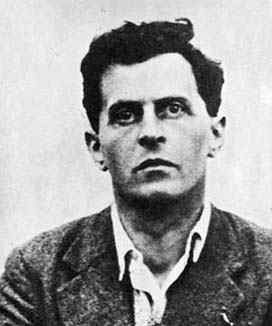






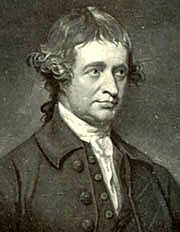


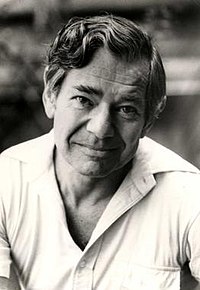










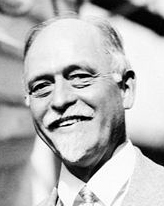



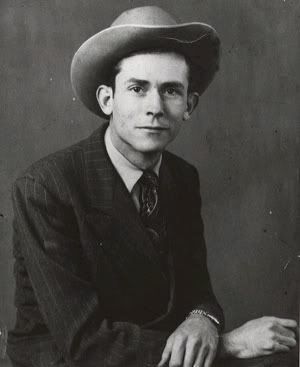







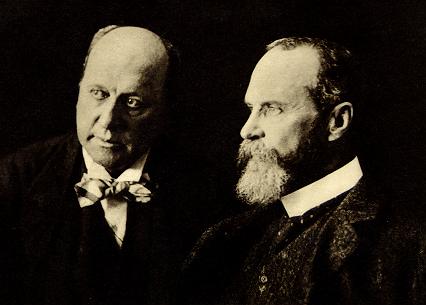


No comments:
Post a Comment